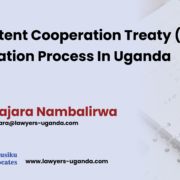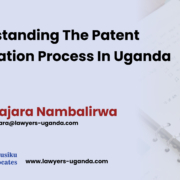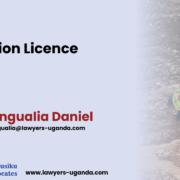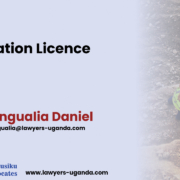The Patent Cooperation Treaty (PCT) is an international agreement that helps inventors and businesses apply for patent protection in multiple countries through a single, unified procedure. Instead of filing separate patent applications in each country, an inventor can submit one international application under the PCT system, which simplifies the process and provides more time to decide in which countries to seek protection. This system is designed to make international patent filing easier, more efficient, and cost effective for applicants worldwide.
Patent protection is vital for inventors who seek to safeguard their inventions not only in their home country but also internationally. Uganda, as a member of the Patent Cooperation Treaty (PCT), offers a structured pathway for inventors to file international patent applications and subsequently enter the national phase within Uganda. This article provides an explanation of the PCT application procedure as it applies in Uganda, both for Ugandan nationals and residents filing directly in Uganda, and for foreign applicants who designate Uganda for patent protection.
- Filing the International Application in Uganda
The PCT system in Uganda is governed by the Patent Cooperation Treaty (PCT) itself and is implemented through the Industrial Property Act, 2014, and the Industrial Property Regulations, 2017, which align Uganda’s national procedures with the requirements of the PCT.
An applicant who is a national or resident of Uganda may file an international patent application directly with the Ugandan Patent Registry, which serves as a receiving office for such filings. When filing, the applicant must submit the application in accordance with specific formal requirements established under the Industrial Property Regulations, 2017. The application must be presented in triplicate to ensure sufficient copies for processing, be in English, Uganda’s official language for patent procedures, and be accompanied by the prescribed fees necessary for transmission and processing. Meeting these requirements ensures the filing is valid and officially recorded.
On the other hand, applicants from outside Uganda typically file their international patent applications through their respective national or regional receiving offices. These applicants can designate Uganda within their PCT application to seek patent protection in Uganda during the national phase.
- Role of the Ugandan Registry in International Applications
The Ugandan Patent Registry, operating under the Uganda Registration Services Bureau (URSB), serves several roles in the international patent process. It acts as the receiving office for applications filed in Uganda by Ugandan nationals or residents. It also acts as the designated or elected office during the national phase when Uganda is chosen as the country for patent protection, whether the application was initially filed in Uganda or abroad.
This means that when the international phase concludes and the applicant decides to seek patent protection in Uganda whether they filed initially in Uganda or designated Uganda from outside the application is processed locally by the Ugandan Patent Registry in line with both national patent laws and the provisions of the Patent Cooperation Treaty. Notably, if any conflict arises between Uganda’s national law and the PCT, the PCT’s provisions take precedence to maintain international consistency.
- Entry into the National Phase in Uganda
After the international application has undergone the international phase, including international search and publication, the applicant must formally request entry into Uganda’s national phase to pursue patent protection within the country. This request must comply with the conditions set out in Articles 22 or 39 of the PCT, including meeting timing requirements usually 30 months from the priority date.
The applicant submits a formal request to have the international application treated as a national application under Uganda’s Industrial Property Act. This step transitions the application from the international system into Uganda’s local patent system, allowing the Ugandan Patent Registry to proceed with examination under national law.
- Handling Refused International Applications
Occasionally, an international PCT application may be refused due to errors or omissions attributable to the receiving office or the International Bureau. There are mechanisms in place for such refused applications to be converted into national applications in Uganda, thus preserving the applicant’s rights. In such cases, the applicant may submit a request along with a statement of facts explaining the refusal and why it should be disregarded. If accepted, the original filing date of the international application is maintained for the national application, protecting the applicant’s priority.
- Publication of International Applications in Uganda
Publication is an important part of the patent process because it informs the public and interested third parties about pending patent rights. In Uganda, when an international application designating Uganda enters the national phase, it must be published within sixty days. This publication occurs both in the Uganda Gazette and in at least one local newspaper. This ensures public awareness and gives any interested party the opportunity to oppose the grant of the patent if they believe it does not meet the legal requirements.
An international application that has already been published by the international patent office is treated in Uganda as though it were published under Uganda’s own patent system, making it legally effective and integrated into the national process.
- Provisional Protection Before Patent Grant
One of the unique benefits provided by Uganda’s law is provisional protection for inventions from the date of international publication of the PCT application. This means the applicant can seek legal relief against infringement for any unauthorized acts that occur after the international publication but before the patent is granted, provided the international publication was done in English. If the publication is in another language, the applicant must transmit an English translation to the alleged infringer for protection to apply. This early protection encourages timely enforcement of rights and deters infringement during the often lengthy patent prosecution period.
- Examination of the Application
After an international application enters the national phase in Uganda, the Ugandan Patent Registry carries out a detailed examination of the application. If the international search or preliminary examination reports are missing, incomplete, or only cover some of the claims for instance, if the applicant declined to pay additional fees or if the claims lack unity the Registrar may reject the entire application or treat the affected claims as withdrawn. The applicant, however, has the chance to correct these issues or explain why the situation was justified.
In addition, if the available reports show that the invention does not meet key requirements like novelty, inventive step, industrial applicability, or clear disclosure, the Registrar may refuse to grant the patent unless the applicant amends the claims or provides convincing explanations to meet the necessary standards.
Conclusion
Uganda’s legal and regulatory framework for PCT applications provides a comprehensive, internationally harmonized process for inventors seeking patent protection in Uganda. Whether the applicant files their international application through Uganda’s receiving office as a national or resident, or designates Uganda from abroad, the procedure requires entering the national phase within prescribed timelines and complying with filing, examination, and publication requirements.
The law also ensures that applicants have avenues to convert refused international applications into national applications, enjoy provisional protection upon international publication, and benefit from a rigorous examination process that upholds patentability standards consistent with both Ugandan law and international obligations.
This comprehensive system ensures that inventors, whether Ugandan or international, have a clear and reliable path to secure patent protection in Uganda. By aligning with global standards and maintaining robust national procedures, Uganda fosters a supportive environment for innovation, helping drive technological progress and economic growth across the country.









